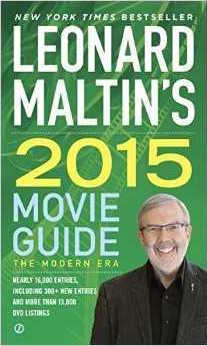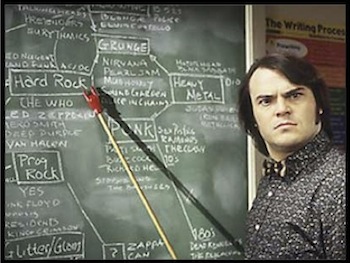
Classroom Guidelines for
Whole Movie ESL Lessons
Extensively revised 01/2016
Jump to:
- Motion Picture Association of America
- Genre
- Finding a Copy of the Movie
-
Whole-Movie Lesson Plan
-
Movies My Way - A Case Study
-
Movie Lesson - DAY ONE
- Pause and Discuss (Trance Removal)
- Vocabulary, Pronunciation, & Cathartic Improvisation
- Movie Lesson - DAY TWO
- Follow-Up Activities & FERPA
- Whole-Movie Oral Review
- New Movie Summaries/Reviews
-The Movie or the Book
-
Assessments and Grading
- Conclusion
Introduction (Movies Grow English)
Movies Grow English (MGE) is dedicated to using movies successfully in the ESL and EFL classroom. This page discusses the practical specifics of classroom management using whole-movies. It's recommended that you have already read Teacher - Whole-Movie Lessons (on the menu bar to the left). Showing movies in the ESL classroom should be a motivating and interactive experience for students with a purpose of maximizing language retention. Your chances for success are improved by making an informed movie selection, having a well-designed ESL lesson in hand, and managing the classroom experience with grace, efficiency, and insight. If you're a teaching professional who already likes movies but hasn't tried using them in the classroom, why not build on this interest and give it a go? It's fun. It's rewarding. And I dare say it's so easy. . . To be honest, with a little knowledge and experience, it gets easier. So keeping this in mind, let's dim the lights and sprinkle the stardust.
Quick Tips for the Classroom:
1. Preview both the movie and its lesson. Lesson and movie are in the same sequence.
2. Within the lesson, decide which quotes, questions, and vocabulary to focus on. Highlight or cut-and-paste content you plan to use.
3. Estimate how you'll use available time for both watching and discussing the movie.
4. Remember: Most questions on the lesson are easy for a native speaker of English to answer, so the movie itself is the answer key.
5. Assessments are at http://www.moviesgrowenglish.com/Assessments.html.
Choosing a Whole-Movie
Movie selection involves several considerations. It goes without saying that the ESL professional will preview (watch) a movie before deciding its suitability for showing in her or his class. Student demographics, movie genre, and running-time are key factors in selecting a movie for your ESL or EFL classroom. For each of the more than 130 ESL lessons at Movies Grow English, this information is researchable by accessing the content at the Whole-Movie Lesson Portals, linked directly from the MGE Home Page by clicking on any of the movie posters which are organized alphabetically. In addition, titles are Sorted by Level of Difficulty HERE (also on the home page). Finally, ESL lessons are Sorted by Movie Genre HERE. Let's take a little closer look at the selection factors.
Student Demographics
This can get complicated. Demographics include, most importantly, age and gender but also country and culture (including religion), background of students, and type of program (academic, survival, oral communication, special purposes). The Internet Movie Database (IMDb) is a good resource for researching almost every movie that has ever been commercially released anywhere in the world. It indicates how popular the film is with both fans and critics. I use it to help select movies for this web site and to match movies to the demographics of students.
Almost all U.S. movie releases have the Motion Picture Association of America (MPAA) rating. It governs the suggested level of maturity required to experience a given movie. The MPAA Rating is a valuable tool to help match a movie to your student demographics, The MPAA rating is included on each of the Movies Grow English whole-movie lessons. Keep in mind that this rating is a reflection of culture and is subject to bias. A movie could be rated quite differently in another cultural context, a context from which your students might come.
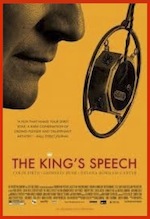 Checking the MPAA rating is no substitute for previewing the movie. For example, what if you were considering showing a particular movie, an Academy Award winner, but discovered that it's R rated (Restricted, contains adult material). You might be dissuaded from showing this film in class unless you previewed it and discovered that its R rating came from only one or two scenes that are considered not appropriate for younger viewers.
Checking the MPAA rating is no substitute for previewing the movie. For example, what if you were considering showing a particular movie, an Academy Award winner, but discovered that it's R rated (Restricted, contains adult material). You might be dissuaded from showing this film in class unless you previewed it and discovered that its R rating came from only one or two scenes that are considered not appropriate for younger viewers.
The King's Speech is such a movie. In my opinion, this is a wonderful story that embraces a profound message, appropriate for all ages . . . except for that one infamous scene which earned The King's Speech its R rating. The resourceful ESL instructor, who previewed the film, might decide that she or he could still show The King's Speech by skipping over that scene. In a another demographic scenario, the ESL professor might choose to focus on this very scene by using it as an example of why, how, and when people use "bad language". The moral is that if you didn't preview the movie, you might miss out on a great teaching opportunity, and your students might miss out on a great learning experience.
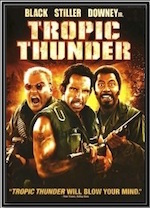 In my opinion, movies with gratuitous sex, violence, and vulgarity are not fit for any demographic in the ESL classroom. However, many if not most movies contain some amount of these elements as part of the story and character development, but not gratuitously. Even Shakespeare and Bambi have sex, violence, and rock and roll. Consider the modern-day example, Tropic Thunder. This is a movie bursting with violence and vulgarity, which may seem gratuitous to some. But because Tropic Thunder is an intelligently crafted satire with well-developed characters (played by some of Hollywood's best-known actors), the violence and vulgarity make sense within the context of the story. What's important is that the students are mature enough to grasp the satire to the level that it motivates them to both discuss the film and write about it in English.
In my opinion, movies with gratuitous sex, violence, and vulgarity are not fit for any demographic in the ESL classroom. However, many if not most movies contain some amount of these elements as part of the story and character development, but not gratuitously. Even Shakespeare and Bambi have sex, violence, and rock and roll. Consider the modern-day example, Tropic Thunder. This is a movie bursting with violence and vulgarity, which may seem gratuitous to some. But because Tropic Thunder is an intelligently crafted satire with well-developed characters (played by some of Hollywood's best-known actors), the violence and vulgarity make sense within the context of the story. What's important is that the students are mature enough to grasp the satire to the level that it motivates them to both discuss the film and write about it in English.
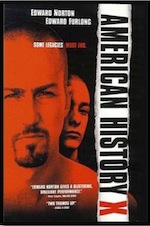 Then there's American History X, the Titus Andronicus of all things celluloid. This urban tragedy has plenty of sex, violence, and vulgarity, but there's nary a gratuitous bone in its body. It speaks honestly. As the captain of your ship, you must carefully decide if your students are ready to learn from a movie such as this. Even if you decide to show it, you may wish to skip over any scene considered too intense. At USC, UCLA and Caltech I've been fortunate to have university students who are keen on digging deep into the psyche of American culture, not in a gawky way for the most part, but in a thoughtful manner.
Then there's American History X, the Titus Andronicus of all things celluloid. This urban tragedy has plenty of sex, violence, and vulgarity, but there's nary a gratuitous bone in its body. It speaks honestly. As the captain of your ship, you must carefully decide if your students are ready to learn from a movie such as this. Even if you decide to show it, you may wish to skip over any scene considered too intense. At USC, UCLA and Caltech I've been fortunate to have university students who are keen on digging deep into the psyche of American culture, not in a gawky way for the most part, but in a thoughtful manner. 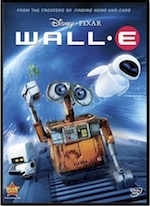 American History X is a film that succeeds like no other in provoking the most intense and sincere classroom discussions among these eager-to-learn young minds. Student comments can be found at the FORUM.
American History X is a film that succeeds like no other in provoking the most intense and sincere classroom discussions among these eager-to-learn young minds. Student comments can be found at the FORUM.
I've provided three examples of choices that test the limits of demographics. You, the teacher, must determine the comfort zone of both you and your students. Remember also to consider the policies and philosophy of your institution. In other words, let common sense rule. It often makes good sense to simply choose from the vast abundance of less controversial films (such as WALL-E). These movies are usually rated G (general admission) and PG (parental guidance suggested). A majority of the ESL lessons at Movies Grow English are for films that carry these ratings.
Another resource for matching movies to student demographics is the writings of your favorite film critic. I like Roger Ebert and Leonard Maltin. Ebert was a film critic at the Chicago Sun Times (1942-2013), and Maltin is affiliated with the University of Southern California. Ebert has published several books about movies that make excellent resources. They are: Roger Ebert's Movie Yearbook 2013: 25th Anniversary Edition, The Great Movies, The Great Movies II, and The Great Movies III. Likewise for Leonard Maltin: Leonard Maltin's 2015 Movie Guide: The Modern Era (Leonard Maltin's Movie Guide), Leonard Maltin's Classic Movie Guide: From the Silent Era Through 1965, Second Edition, Leonard Maltin's 151 Best Movies You've Never Seen. Your favorite film critic can quickly give you a good idea of the content of a movie, so you can avoid going through the trouble of getting a copy and previewing it only to realize that it does not fit the demographics of your class.
Genre
It's next to impossible for the ESL Instructor and the students to arrive at a general consensus about which movie(s) to watch in class. Selecting by genre can make consensus building a little easier especially when students help in the decision making. One approach is to ask the students to vote on one of several genre (e.g. comedy, drama, action). Then I select several approved titles within the winning genre, and the students get to vote on the final choice. If there's no clear consensus, a runoff vote usually does the trick.
If you're lucky enough to teach a class which regularly shows movies, on the first day of class, simply poll the students to get a general sense of their favorite genre. During the first week of class, I usually create a TOPIC at the Movies Grow English Forum and request that my students go there to post their favorite specific movies and genre. Occasionally, I discover that several students share a favorite movie. This movie might be a good choice to show in class. Sometimes, a student comes up with a great movie idea and a copy of the DVD. Several of the movies on this web site have resulted from this fortunate meeting of the minds.
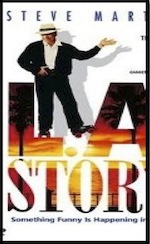 Running Time
Running Time
Class management requires the teacher to know the length of the movie. You probably know that the average running time of a movie is two hours. Comedies are usually shorter, while dramas are longer. I've resisted putting Titanic on Movies Grow English even though it's one of my favorite films. The four-hour running time makes Titanic an impractical choice. 2001: a space odyssey is a good example of a long movie that, because it has a serialized design, can easily be shown in segments. To show a whole movie with a typical two-hour running time, I want to dedicate three to four hours actual class time. For a longer movie like Avatar, or a shorter film like L.A. Story, I adjust accordingly. In other words, I want there to be adequate time to not only watch the movie but also discuss the movie both during and after the viewing experience. Discussion time includes vocabulary focus.
Finding a Copy of the Movie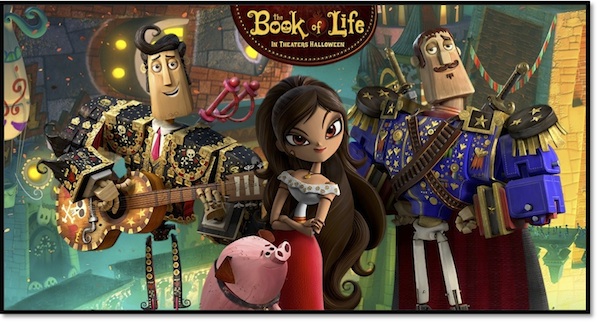
Movies Grow English is not licensed to sell, rent, or share movies, but there are ways to legally obtain copies of movies for very little money and often for free. On this website there are numerous links to Amazon.com, where it is easy to buy or rent the film of your choice. Since I am an affiliate of Amazon, your purchase helps support my efforts. Netflix and Redbox are two other popular and super inexpensive options for renting movies in the U.S. They or similar business models are probably available in most countries.
When it comes to buying DVDs, I keep my eyes open for good movies at a good price. In local variety stores, discount markets, or pharmacies, good movies can often be had for $5-10. So it's not difficult to grow your own collection of DVDs. For no cost, I can also get copies of movies at my local library, which is connected to a network of libraries from which I can borrow a DVD for next-week's lesson. This arrangement is probably available in most urban areas. However, before using a borrowed DVD in the classroom, check to be sure it is in physically usable shape.
With a little resourcefulness, it should be fairly easy to locate a copy of the movie you're planning to use.
Whole-Movie Lesson -- Content/Layout
Lesson Plan
Once you have committed to showing a movie to your students, you'll need a good ESL lesson plan. I know from experience that it takes a lot of time to create whole-movie lessons. This is one reason I put together this web site. I thought that if I could share the knowledge I've gained and the material I've developed, it might save time for others.
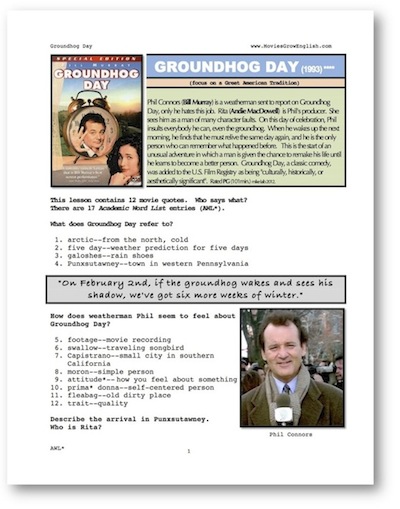 If you're interested in trying the Whole-Movie ESL Lessons at Movies Grow English, I recommend first having a look at the Featured Lesson on the menu bar. Its design is typical of all the whole-movie lessons on the site. I'm sure you'll agree that these lessons are streamlined and adaptable. This means the intrepid ESL professional is not locked into using them only one way. Since each lesson mirrors the time order of the movie itself, teachers are free to use the entire movie lesson, spend as much or as little time as desired on any given section of the lesson, or focus on a particular short sequence. You have complete freedom to use your own science for teaching English by personalizing your most dazzling activities around the content of any given lesson, or simply use the whole-movie ESL lesson as is.
If you're interested in trying the Whole-Movie ESL Lessons at Movies Grow English, I recommend first having a look at the Featured Lesson on the menu bar. Its design is typical of all the whole-movie lessons on the site. I'm sure you'll agree that these lessons are streamlined and adaptable. This means the intrepid ESL professional is not locked into using them only one way. Since each lesson mirrors the time order of the movie itself, teachers are free to use the entire movie lesson, spend as much or as little time as desired on any given section of the lesson, or focus on a particular short sequence. You have complete freedom to use your own science for teaching English by personalizing your most dazzling activities around the content of any given lesson, or simply use the whole-movie ESL lesson as is.
In brief, each Whole-Movie Lesson contains a poster image in the upper left corner of the first page. To the right is the theme focus (e.g. Groundhog Day "focus on a Great American Tradition") and directly below is a brief story set-up created with the students in mind. These are usually followed by preview questions. The bulk of the lesson is a revolving door of movie quotes, vocabulary, and comprehension questions. The midpoint of the movie is marked for the sake of time management in the classroom. At the end of the Whole-Movie Lesson there is usually an essay question which elicits opinion or inference. Finally, there are Internet links including the official link if available. Please visit Anatomy of a Whole-Movie Lesson for an in-depth tour of a typical MGE whole-movie lesson along with tips on how to use it.
Movies My Way - A Case Study
I learned class management with movies during my ten or so years teaching the movie elective at UCLA. This class would meet twice per week, a total of four hours. The students were high-level ESL in an IEP geared for university-bound and business-minded students. I would typically show one movie per week over a five-week session. This meant roughly half the time for viewing, and half for practice.
I learned that it was a good idea to set the tone of the class on the first day of the session. I would make a point to ask my young scholars what they thought the purpose of the movie class was. Often there would be one Charley Brown seated near the back of the class who would say, "To watch movies." Of course, the response I wanted was, "To learn English." I also learned to elicit a five minute discussion on the topic of which language skills can be improved by watching movies. My hungry-to-learn students would always find it quite illuminating to realize that the list includes just about everything: vocabulary and grammar, the four basic skills, slang/idioms, culture, and overall fluency.
 My Typical Whole-Movie Lesson (4 hours)
My Typical Whole-Movie Lesson (4 hours)
DAY ONE (2 hours)
To prepare, after selecting the weekly film selection, I would go over the handout for the ESL lesson and determine which vocabulary and comprehension questions to focus on in class. I knew that there probably would not be enough time to discuss all the vocabulary in class, and that even though I planned to skip over some items, I might still be asked questions about them.
I might opt to focus on vocabulary from the Academic Word List, words within a particular thematic set or context (e.g. legalese--Erin Brockovich), or maybe just get "all twisted up in the slang" as in Bringing Down the House. I learned to make note of the halfway point on the lesson so I'd know in advance where to pause the movie to finish of the first day's lesson.
Preview Questions
On DAY ONE the first thing I would do with the lesson was have the students look over the story set-up located in the upper right hand corner of page one. I would form students into small groups to discuss both the setup and the preview questions. All of this was meant to activate students' knowledge of the movie topic, to get them somewhat immersed in the world they were about to enter. As they discussed, I circulated and provided guidance. I was preparing the students for the amazing movie-watching experience to come.
Vocabulary Preview
I would then preview the selected vocabulary only for the first half of the lesson since we were only going to watch the first half of the movie on DAY ONE. As the class advanced through the vocabulary items, I made a point to encourage questions and allowed time for students to absorb information and use dictionaries. It is important to keep in mind that vocabulary items in my lessons are followed by meanings/definitions that are specific to the context of the word as it is used in the movie.
The pedagogical goal of using the fewest possible words to get as close as possible to the in-context meaning of each vocabulary item is language retention. I have learned from my tenure at UCLA and elsewhere that it is probably best to avoid overloading students with long-winded multiple word-meanings and arcane references. I simply want to bring the specific meanings to life. I found it useful to provide real-life context such as current events, visual cues, opposites, anything I could pull out of a hat. I found that this vocabulary-warmer usually takes ten to fifteen minutes, and it shouldn't be rushed. To review the MGE pedagogical discussion on vocabulary, please refer back to Keith Folse at Teacher - Whole-Movie Lessons.
 Pause and Discuss (Trance Removal)
Pause and Discuss (Trance Removal)
Part of the magic of watching a good movie is its ability to transport us to another world, to put us into an almost hypnotic state. This is how movies are designed to entertain, but it often works against the state of motivational interactive learning that the ESL teacher strives to create in the classroom. So the hypnotic plug must be pulled from time to time to return the students to reality.
This alone is justification enough to pause a movie in the ESL classroom. But more importantly, it's an opportunity for students to practice English. So I learned that before starting the movie, it's a good idea to advise the students that the movie will be paused from time to time so that it can be discussed, usually in pairs or small groups. With this said, I would insert the DVD into the player, grab the remote controller, engage subtitles, and it's show time, baby!
I learned that while watching the movie, I should keep one eye on my copy of the ESL lesson to remind myself which comprehension questions are marked for pause and discuss (because they were determined to be of particular relevance to this ESL lesson). After pausing the movie, I might simply ask students to turn to the person next to them and share their reactions. I might ask several students to share their answers with the class, but not every time I'd pause the film. I would also want to maintain the continuity of the movie by keeping the pauses brief, usually no more than five minutes.
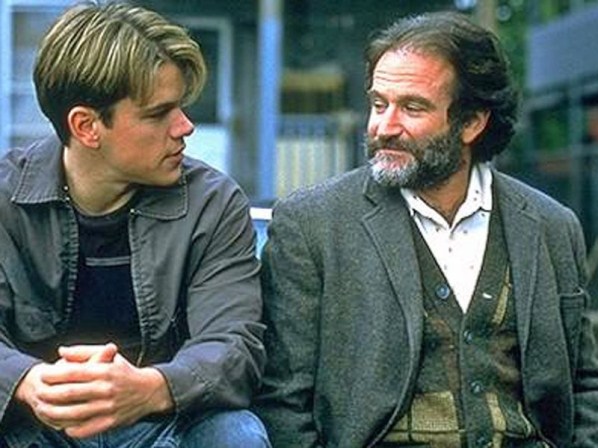 I learned that pause and discuss in the context of a movie-based ESL lesson has two powerful teaching advantages. Movie watching does a darn good job of lowering the affective filter as discussed in detail on the Teacher - Whole-Movie Lessons page at MGE. The prudent ESL master knows that she or he can take advantage of using the added headroom of the lowered affective filter by encouraging error correction. This means that as the students discuss, the teacher monitors for errors (not mistakes) and suggests corrections among the students. The intended results are actual error correction, but more importantly, empowerment of the students to elevate their own self awareness of error correction so that they will become better at self-monitoring. The monitor, as first defined by Steven Krashen at USC, is a key guardian in the battle against fossilization.
I learned that pause and discuss in the context of a movie-based ESL lesson has two powerful teaching advantages. Movie watching does a darn good job of lowering the affective filter as discussed in detail on the Teacher - Whole-Movie Lessons page at MGE. The prudent ESL master knows that she or he can take advantage of using the added headroom of the lowered affective filter by encouraging error correction. This means that as the students discuss, the teacher monitors for errors (not mistakes) and suggests corrections among the students. The intended results are actual error correction, but more importantly, empowerment of the students to elevate their own self awareness of error correction so that they will become better at self-monitoring. The monitor, as first defined by Steven Krashen at USC, is a key guardian in the battle against fossilization.
The second advantage to pause and discuss goes hand-in-glove with the first advantage. The true purpose of comprehension questions on an MGE designed movie ESL lesson is not so much to test one's understanding of the movie. The purpose is simply to practice English. This might seem obvious, but in fact, I have received a number of emails from ESL teachers who have used MGE ESL lessons. They want to know if there is an answer key to the comprehension questions. The movie itself is the answer key! In other words, most of the comprehension questions are no-brainers for the native speaker of English to answer. This means that the comprehension prompts are designed to be transparent gateways for non-native speakers of English to demonstrate their competency of spoken English during pause and discuss. Can I get a witness?
Vocabulary, Pronunciation & Cathartic Improvisation
Even though vocabulary has already been previewed before watching the movie, I may wish to pause a film to point out the context in which a vocabulary item is used, how the context may control the meaning, and expand on what the item actually means.
This can be a fun time to demonstrate various ways to express word meanings, especially with words that have multiple meanings. To elicit the meaning of a vocabulary item in the whole-movie ESL lesson, I usually begin by using other words. This is basically a dictionary-style definition of the word's meaning in its current context. This is the strategy that is used most often by native speakers, but it has limited success with non-native speakers because, as Keith Folse points out, they could choose the wrong meaning from their dictionary, or they don't understand what the "other words" mean. 

Fortunately, there are other strategies that work well for ESL students. Sometimes, the best way to explain the meaning of a word is to use its opposite. For example, the opposite of frigid is hot. They may not know frigid, but they know hot. The opposite of feeble is strong. Same idea. Another approach is with examples. The word vegetable is like carrot, tomato, or lettuce. The most fun strategy for explaining word meanings is probably body language, also called pantomime. What does bored mean? Angry? (See above.). Finally, draw a picture. For example, try to explain what star means. It's much easier to draw a picture. Students feel empowered when they discover how easy it is to connect skills they already know with language-learning strategies.
I learned that by modeling these strategies early in the session, repeating them from time to time, and giving students opportunities to practice them, they are likely to employ these strategies on their own.

I may also pause a film and point out how the meaning of an item is actually explained in the dialogue, a phenomenon quite obvious to me, but often not so to students. An excellent example of this happens in the film Contact where Elly Arroway (Jody Foster) and Palmer Joss (Matthew McConaughey) discuss and explain the meaning of "Occam's razor". Once the scene finishes, I pause the movie and ask if there are any questions. To my wonderment someone in the class asks the meaning of Occam's razor. My best response is to ask the class if anyone knows the meaning. There's always someone who's paying attention and has the answer, to the wonderment of half the class, those who aren't really listening. The shame induction of this exercise may seem a tad sadistic, but I'm sure it's a lesson learned. In this case I'm willing to err a tad on the side of tough love.
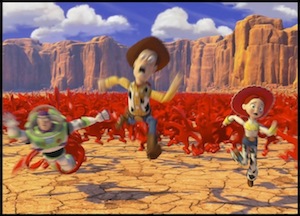 Many vocabulary items are also difficult to pronounce or intonate in context. So when pausing for meaning, I may also have the students practice the pronunciation, especially within the item's given context. Things get more fun when a vocabulary item is embedded in a movie quote. This quote could be in the lesson not just because of its content, but because of how it's delivered by the actor.
Many vocabulary items are also difficult to pronounce or intonate in context. So when pausing for meaning, I may also have the students practice the pronunciation, especially within the item's given context. Things get more fun when a vocabulary item is embedded in a movie quote. This quote could be in the lesson not just because of its content, but because of how it's delivered by the actor.
For example, in the film Almost Famous the expression, "It's all happening." is spoken a number of times in various contexts. The actors vary the intonation in ways that actually change the meaning of the expression. Imagine the fun you'll have practicing this one with your students --- more fun than a barrel of monkeys (unless you're Woody in Toy Story 3).
As for pronunciation, let's remind ourselves that movie quotes, like any other thought group, typically have three levels of stress (focus word, content word, function word), and changing the focus word can change the meaning. Typical pronunciation errors can vary by first-language. In addition to stress, I particularly listen for vowel sounds, consonant clusters, and inclusion of final syllable. Like stress, blending and reducing within thought groups can also be a challenge for some language groups.
When teaching via a movie, I'm subject to inspired moments of cathartic improvisation. In my case, this means an inspired burst of emotional discourse describing a relevant connection between the movie's language and a charged moment or experience from our world. Intuition suggests that making a passionate and loving connection between our world and the movie's world generates deeper resonance with the movie-watching experience and results in greater language retention. In a general sense, language learning may have its greatest chance for success when it's immersed in an emotional experience. As far as I know, movie watching is the second-best way to achieve this.
DAY TWO (2 hours)
Before showing the second half of the movie, we review the DAY ONE vocabulary to encourage retention. I usually spot-check the more important vocabulary items. After previewing the vocabulary for the second half of the movie, we might do a quick recap of the first half, especially for students who were absent. I want to remember to make sure that all the students are given copies of the lesson, and I remind students that there will be an end-of-session assessment of vocabulary and comprehension. This is a roundabout way of encouraging students to hang onto their lessons. After all, the lessons as a whole become like a textbook for the class. It's show time! Overall, the movie-watching routine is much like DAY ONE (pause and discuss).
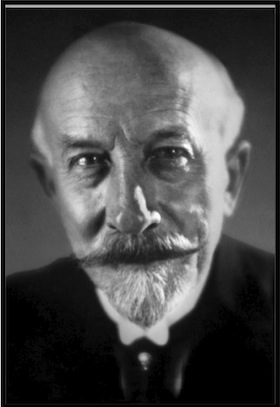 Follow-Up Activities & FERPA
Follow-Up Activities & FERPA
After watching the second half of the movie, I'll want to spend ten to fifteen minutes for discussion questions and final vocabulary review. For this, students work in small groups while I circulate and monitor. Some whole-movie ESL lessons include brief character-or-vocabulary activities which can be practiced at this time. Other lessons contain background information about the topic or about a historical character represented in the movie such as early 20th-Century filmmaker, Georges Méliès (left) in Hugo or James Hunt and Niki Lauda in Rush. Now is a good time to talk about these guys.
 Lessons include a suggested essay question which can be assigned as homework. I have students post their written responses at the MoviesGrowEnglish Forum, which means they are published and shared. It only takes a minute to register, and there is a help worksheet at How to Register at Movies Grow English and Engrade. When I remind students that their posted essays can be read by friends, family, even strangers, it usually empowers them to do a better job.
Lessons include a suggested essay question which can be assigned as homework. I have students post their written responses at the MoviesGrowEnglish Forum, which means they are published and shared. It only takes a minute to register, and there is a help worksheet at How to Register at Movies Grow English and Engrade. When I remind students that their posted essays can be read by friends, family, even strangers, it usually empowers them to do a better job.
This is also a good time to remind students to protect their online privacy. I suggest they don't use family names when posting. Instead, create a username which is close enough to their name for me to identify them for grading purposes. Still, in today's new age of transparency, many people don't mind giving away their privacy. IMHO it's better to err on the side of caution. In addition, your institution may have a privacy-protection policy. In the U.S. FERPA (Family Educational Rights and Privacy Act) governs certain rights of privacy for students. In my forum posts, I don't mention the school, the program, or the class just to maintain a cushion of insulation from predators.
While anyone can read the FORUM, I want people to know that before one can gain access to posting and emailing privileges, their registration must be activated by me as the administrator. I did this because when I first put up Movies Grow English, the FORUM was inundated with SPAM. Later I realized that I was also providing a layer of protection for those who use the FORUM. As of January 2016, there are close to 1000 registered members and more than 2000 posts.
 Other Whole-Movie Activities
Other Whole-Movie Activities
Whole-Movie Oral Review at UCLA
During alternate five-week sessions at UCLA, I would have my students pair up and present New Movie Reports to the class. It's one of the most fun and beneficial activities they do because it combines watching a movie that few have seen, with the adventure of sharing their ideas about it in front of an audience--in English. For some, the mere mention of an oral presentation, especially in a second language, can be more adrenaline inducing than riding the 360 degree vertical loop on The Riddler's Revenge at Six Flags Magic Mountain. But I can report that this activity has had great success when well organized.
First, students choose a partner (based on shared movie-genre interest) and sign up for a presentation date. I try to start out with strong presenters to set a good precedent. During the week before their presentation, students will go to a theater and see their NEW movie of choice, one that has not been reviewed by other classmates, preferably together. They will prepare and deliver a ten-minute oral review of this movie, which should include a brief setup along with opinions of the movie, which may differ.
I remind presenters to work from notes (key words), don't read too much, make eye contact across the room (Don't stare at the teacher.), project their voices --- platform skills, and please don't tell us how the movie ends. They should be prepared to take questions. Above all, they're going to have a lot of fun while practicing English.
The Site Map on MGE connects to a handout called Oral Review Guidelines. Each week, I distribute this handout to the upcoming presentation team(s). It will help organize the preparations. Most students want to use PowerPoint with their presentation. For this, I have a handout called PowerPoint Do's & Don'ts written by Jeff Wuorio. It explains how PowerPoint can be integrated into a presentation without over-PowerPointing it. These suggestions also apply to Keynote (Apple) and Prezi.
Students must also post a follow-up written report at the FORUM under Movie Reports and Recommendations. It will include the setup and their opinions of the movie. For this to happen, I first must create a new topic where all of the posts can appear or direct the students to an existing topic.
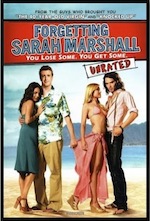
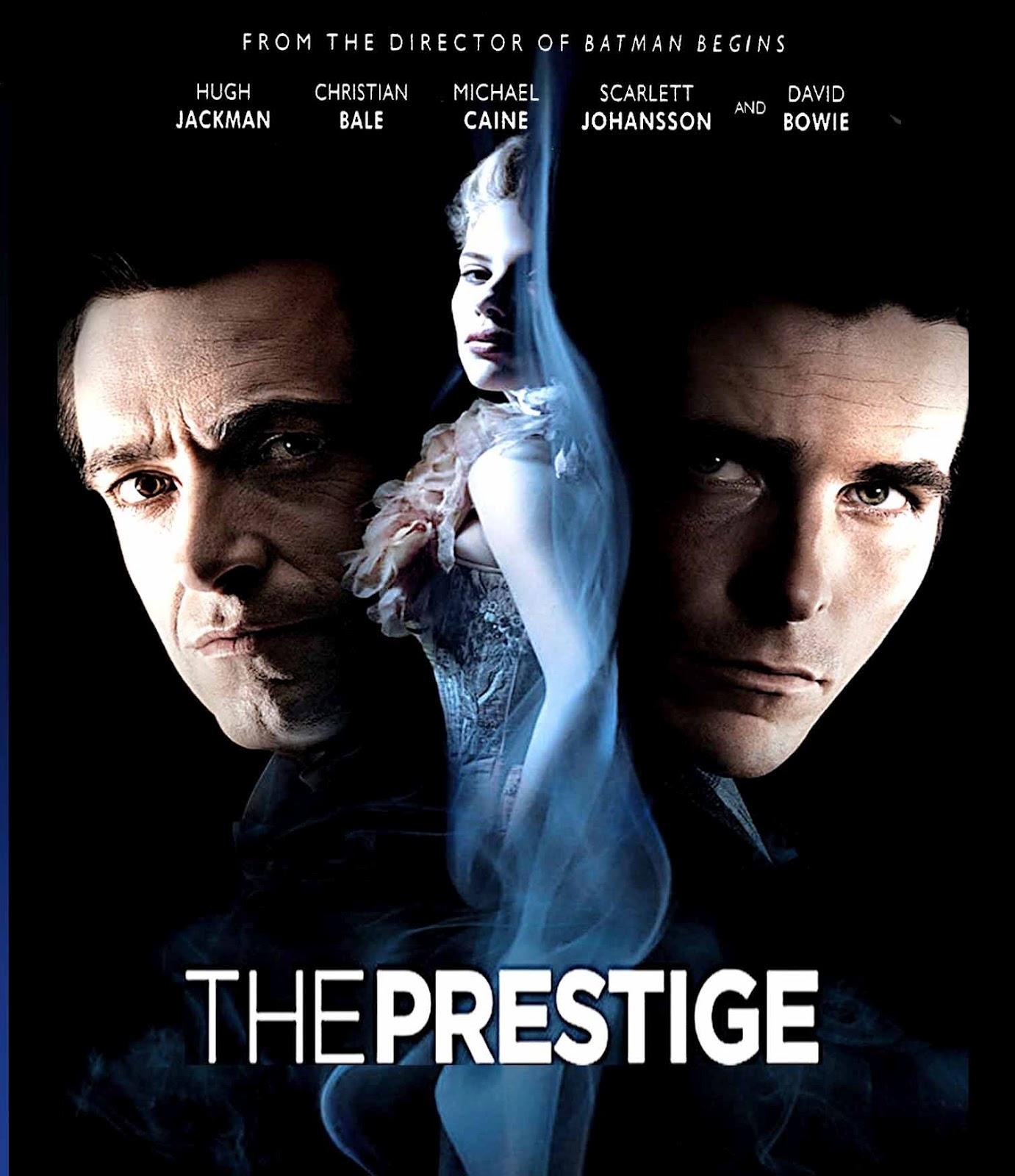 Sometimes presenters report back that their movie was boring. This often happens with a mature comedy like Forgetting Sarah Marshall or a mature drama like The Prestige. I've come to realize that "boring" is sometimes code for "difficult to understand". The tip-off comes when I ask if the comedy was funny. The students respond that everyone in the theater was laughing, but the students weren't. With a drama, you can tell because the presenters have difficulty explaining the complexities of the story. Therefore it was "boring".
Sometimes presenters report back that their movie was boring. This often happens with a mature comedy like Forgetting Sarah Marshall or a mature drama like The Prestige. I've come to realize that "boring" is sometimes code for "difficult to understand". The tip-off comes when I ask if the comedy was funny. The students respond that everyone in the theater was laughing, but the students weren't. With a drama, you can tell because the presenters have difficulty explaining the complexities of the story. Therefore it was "boring".
Their negative experience with the movie can save others from repeating the same frustration, but I'd prefer to shield students from this whole mess in the first place. This is why I make a point to read the film reviews and ratings at IMDb to try and steer presenters toward more suitable movies. The Input Hypothesis, first published by Steven Krashen at USC in 1977 suggests that, when selecting a book to read, the language learner should choose material which is just a little more difficult than one's current level of English. I'd like to suggest that the input hypothesis applies to movie selection as well.
That said, my job is also to encourage students and to prod them a little. I remind students that, for both in-class movies and movies they see on their own, it's not necessary to understand every little word. If they get the main idea (can follow the story) and at least some detail, and if they learn some vocabulary, the experience was undoubtedly worthwhile. This attitude has been called tolerance for ambiguity, and IMHO it serves language learners quite well.
Finally, I advise students that comedic references in movies are often based on cultural awareness such as a reference to a particular celebrity or historical event that the ESL students may be unaware of. This can actually lead to a positive experience of discovery and exploration for the curious ESL movie watcher. After watching Tropic Thunder, the inquisitive young scholar may seek out their American friends and ask them to explain the mystery of what Simple Jack was all about, and why anyone would think that his actions in the movie were at all funny. Overall, I've learned that oral presentations in a film class open up a number of pathways for fruitful exploration along the road to language learning.
 Whole-Movie Oral Review at USC
Whole-Movie Oral Review at USC
At USC's International Academy, I only have three hours per week for the Film Elective, not enough time for New Movie Reports. Instead, I sometimes organize a similar version of the above exercise in my Oral Skills class based on the same lesson plan as at UCLA. Students work individually or in teams of two. They select a NEW movie in a theater and present their setup and opinions.
I recently initiated a poster-presentation element to the procedings. Students are still asked to post their findings on the MGE FORUM as at UCLA, but in addition they create a hard-copy poster to accompany their oral presentation. Starting in April 2016, I have been putting photos of their posters on a special MGE page at http://www.moviesgrowenglish.com/
StudentPosters.html. Students seem to respond favorably to this prompt and enjoy sharing and comparing their posters.
New Movie Summaries/Reviews
Each week there are some five to ten major movie releases in the U.S. I used to create and distribute a weekly handout containing brief summaries of these new releases from the Internet Movie Database (IMDb), but now I find it more practical to put the website up on the white screen and share it together with the class. Students can be looking at it on their electronic devices or on the screen. The New-Movie Summaries are a good resource for having students choose a movie for their Whole-Movie Oral Reviews, discussed above and the Small-Group Reviews, discussed below.
Small-Group Review
During alternate five-week sessions, instead of organizing Whole-Movie Oral Reviews, I would advise students at the beginning of the session that they would be responsible to see at least one new movie in a theater per week. On DAY ONE of each weekly lesson, I put students in groups of three or four where they would take turns sharing their weekly movie (summary and opinion). As usual, I'd circulate and monitor. The advantage of the Small-Group Review is that everyone gets a chance to talk about movies, every week and the situation was less stressful to those who were shy about doing oral presentations in front of the class. While monitoring, I try to make sure everyone is participating.
Who Says What
Here's a simple game that makes use of the ten or so movie quotes within the whole-movie lessons at MGE, it encourages note taking, and it motivates class members to try and outdo each other in mimicking the voices of famous film stars. I might use this activity once during a five-week session. Before showing the movie, I direct the students' attention to the movie quotes in the lesson, and inform them that they will later be asked who says what. It's helpful to also point out the pictures and names of the main characters found throughout the lesson for name-face recognition. To complete our preparation, I have the students say the quotes aloud.
While watching the movie, students are to listen for the quotes and annotate who says what, on the lesson. I suggest stopping the movie after the first quote is spoken and once or twice thereafter to get and keep everyone onboard.
Post-movie activities can be handled a number of ways. Students may be divided into teams to compete against each other. Students take turns speaking a quotation of their choosing in character and ask who says this line of dialogue. The other group(s) must guess correctly for points. I sort of referee the whole thing, tally the points, and provide the correct answer as needed. If the movie character who speaks the line is not pictured on the lesson, I might have to remind students who this person is. This can be a lively activity with lots of language practicing. For a bonus-point activity, students vote on who, among their classmates, is the best thespian (could be a tie breaker).
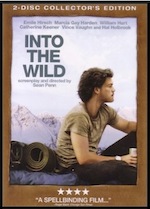 The Movie or the Book
The Movie or the Book
At UCLA, I would sometimes share students with a reading teacher, which would give us an opportunity to co-teach by coordinating a book with its movie. A successful example of this is Into the Wild. The movie, directed by Sean Penn is based on the book by Jon Krakauer. It's the true story of Christopher McCandless and his quest for ultimate freedom. It provokes a lot of discussion about McCandless' motives for his actions. Students can also discuss and write about the choices that Sean Penn made when he brought the story to the screen. And there's always the question of which is better, the movie or the book (compare and contrast).
Movie Realia
Occasionally, I run across an interesting news item from a magazine or the internet which has relevance to my movie class. For example, Oscar season generates a lot of media coverage and drama. Such realia can create a discussion context for the class or even a game (e.g. who will win the Oscars). In general, spicing up your class with a splash of movie realia brings more emotion to the learning environment. As I mentioned before, emotionally charged language learning can be the quickest path to a successful outcome.
Directing and Screenwriting 101
When there would be sufficient class interest in movie jargon (e.g. protagonist, three-act structure), I might take the liberty to discuss the contents of a handout called Movie Terms. This is where my UCLA screenwriting training comes in handy. While I generally feel that discussing movie technicalities in an ESL movie class is not the best use of time, it can sometimes be a fun digression from the normal routine.
My Typical Whole-Movie Lesson (3 hours)
From UCLA to USC
When I transitioned to University of Southern California (USC) two and a half years ago, there was no way to know what changes might come for teaching movies in the ESL classroom. I'm grateful to Deb Detzel for recognizing my passion for using movies and allowing me to teach the Film Elective at what is now called the International Academy. The biggest change between the UCLA and the USC film elective is the number of hours per week. At USC I have three hours per week to work with, so I have adjusted my class management accordingly.
I still show one film per week and do most of the activities that I did at UCLA, but it gets spread out a little more. I'm also more likely to use a short-sequence lesson at USC. With short sequences, there is more class time to examine the details of a five-minute slice of a movie. This means more focus on vocabulary in and out of context, collocations, tone (formal/informal in all its nuances), main idea, detail, and inference, time order, and much more including writing. Using short sequences is a productive way to break up the routine. It gives students ample opportunity to work collaboratively.
Whereas at UCLA I would spread oral presentations over the course of five weeks, at USC there is not enough time to present and watch a movie. Instead, oral reports are all scheduled for one week, during which we forego watching a film in class. Otherwise oral presentations are organized more or less the same as at UCLA. The real point I'm trying to make is to exemplify that films are extremely adaptive to various classroom situations as long as the teacher plans accordingly.
Assessments and Grading
Assessments
For Whole-Movie lessons, Assessments are located at the MGE menu bar. These five-item assessments demonstrate how multiple-choice questions can be employed to test knowledge retention. Each assessment contains three vocabulary questions, many of which test for words from the Academic Word List. Most of the distractors are meanings taken from the lesson as well. Usually, they are the same part of speech (e.g. verb). The other two questions address comprehension, and they may also test for vocabulary. Using the assessment resource, I can quickly create a 25-question final quiz for the five films of a given session by copying the question sets from the Whole-Movie Assessments over to a new doc.
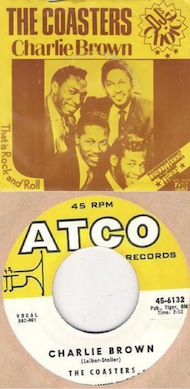 Grading
Grading
One of teaching's dirty little secrets is that when students aren't held accountable, some students don't grasp the concept that "learning is its own best reward." This misconception can be especially true in a movie ESL class, where my favorite Charley Brown "walks in the classroom cool and slow" and figures that movie time is a good time to be unfocused and passive. Wrong, wrong, wrong!!! Hence, grading.
More importantly, the wise teacher knows that most students are hungry for measured feedback so they can monitor and track their progress. In other words, grading is a way for students to measure the rewards of learning. Students want to be tested. Therefore, I've concluded that grading is a best practice in a movie class, as much so as in a required core class.
My movie ESL Elective at UCLA was PASS/Not PASS, but I’m happy to say that at USC, the Film Focus-Skill Class is graded the same as any Core class, as a percentage of 100 with letter grades assigned to numerical grades. Here's my grading scheme.
I usually award 50 points for posting movie-and-genre recommendations at the beginning of a session, and 100 points for overall participation. Over the course of a session, I typically give 100 points for each writing assignment (one per weekly movie) . There may be an oral presentation good for 100 points, and about 100 points for the final quiz depending on how many whole movies are watched. For short-sequence lessons, there is a 50-point writing assignment. I require my students to post and publish all written work at the Movies Grow English FORUM. Passing grade is 73%.
For record keeping, I use the online grade book at Engrade.com which was introduced to me by Matthew Stivener at Santa Monica College. Todd Kolberg at USC was kind enough to show me the fine points of Engrade. Some of my colleagues and I recommend Engrade over old-school grade books because, as a teacher, it makes my job easier (It even does the math.), and students can view their running averages and individual grade results online as soon as they're posted. Plus, Engrade's free and free of ads. At How to Register at MGE and Engrade, there is a worksheet designed to help students register for Engrade and the Movies Grow English FORUM. Both are very easy. I've also used eCompanion at Santa Monica College. Blackboard is another popular academic product that includes an online grade book. Both eCompanion and Blackboard are good options but they require a site license. In any case, I recommend online grade books such as Schoology. Engrade was a teacher favorite, but in 2017 a site licence was required in order to use it.
Class Dismissed
If you stayed with me through all 7500 or so words of Classroom Guidelines, I'm so flattered. I'd humbly wager that there are a great many ESL professionals out there who have a million great ideas for using movies in the ESL and EFL classroom. You already know what to do and may have been doing it for a long time. Still, it is my sincere wish that by sharing my experience and knowledge at Movies Grow English, I may have helped make your task a little easier, more productive, and maybe more fun. Thank you for visiting my website, and I hope you'll visit again. Please use the e-mail address below to contact me and share your ideas.
![]()
More suggestions on the Menu Bar at:
Teachers
Student FAQs
Anatomy of a Whole-Movie Lesson
Motivational and Effective Film Activities by Lin, Li-Yun
Related Resources:
Pros and Cons of Captioning
Films and Learner Motivation
Films for ESL
Language Acquisition vs. Language Learning
Go Back to the Top
"Movies bring dreams to life."
![]() (7500 words)
(7500 words)

